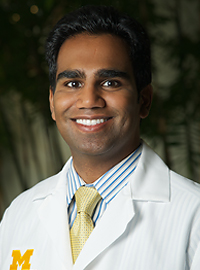Research Regarding Invasive Squamous Cell Carcinoma Published
By Camren Clouthier | May 29 2020The Department of Pathology has released a new article related to invasive squamous cell carcinomas and the precursor lesions that demonstrate concordic genomic complexity in driver genes. The study, led by experts from the University of Michigan, was just published in Modern Pathology.
The team of Arul Chinnaiyan, MD, PhD, Rajesh Rao, MD, Xiaoming Wang, PhD, Scott Tomlins, MD, PhD, and Paul Harms, MD, PhD, along with other contributors, were chiefly responsible for bringing the research to light.
The focus of the study examined squamous cell carcinomas (SCC) and why they are the most frequent human solid tumor at many anatomic sites. Experts wanted to better understand the driving molecular alterations underlying their progression from precursor lesions, particularly in the context of photodamage. Therefore, researchers used high-depth, targeted next-generation sequencing (NGS) of RNA and DNA from routine tissue samples to characterize the progression of both well- (cutaneous) and poorly (ocular) studied SCCs. They assessed 56 formalin-fixed paraffin-embedded (FFPE) cutaneous lesions (n = 8 actinic keratosis, n = 30 carcinoma in situ [CIS], n = 18 invasive) and 43 FFPE ocular surface lesions (n = 2 conjunctival/corneal intraepithelial neoplasia, n = 20 CIS, n = 21 invasive), from institutions in the U.S. and Brazil.
 "While our work is generalized to UV-exposed epithelia specifically, ocular surface and skin, the ocular portion is a central part," says Dr. Rajesh Rao. "On a mature next generation sequencing platform, we profiled invasive ocular surface squamous neoplasia (OSSN) for the first time, and found actionable genetic alterations that may be amenable to current or near-term therapies currently used for non-OSSN cancers. This is important for ocular disease, because unlike the retina gene therapy, there are no genetically-tailored treatments for the ocular surface."
"While our work is generalized to UV-exposed epithelia specifically, ocular surface and skin, the ocular portion is a central part," says Dr. Rajesh Rao. "On a mature next generation sequencing platform, we profiled invasive ocular surface squamous neoplasia (OSSN) for the first time, and found actionable genetic alterations that may be amenable to current or near-term therapies currently used for non-OSSN cancers. This is important for ocular disease, because unlike the retina gene therapy, there are no genetically-tailored treatments for the ocular surface."
Approximately seven additional cases of advanced cutaneous SCC were profiled by hybrid capture-based NGS of >1500 genes. The cutaneous and ocular squamous neoplasms displayed a predominance of UV-signature mutations. Precursor lesions had highly similar somatic genomic landscapes to SCCs, including chromosomal gains of 3q involving SOX2, and highly recurrent mutations and/or loss of heterozygosity events affecting tumor suppressors TP53 and CDKN2A. Additionally, we identify a novel molecular subclass of CIS with RB1mutations. Among TP53 wild-type tumors, human papillomavirus transcript was detected in one matched pair of cutaneous CIS and SCC. Amplicon-based whole-transcriptome sequencing of select 20 cutaneous lesions demonstrated significant upregulation of pro-invasion genes in cutaneous SCCs relative to precursors, including MMP1, MMP3, MMP9, LAMC2, LGALS1, and TNFRSF12A. Together, ocular and cutaneous squamous neoplasms demonstrated similar alterations, supporting a common model for neoplasia in UV-exposed epithelia.
The results showed that treatment modalities useful for cutaneous SCC may also be effective in ocular SCC, given the genetic similarity between these tumor types. Overall, in both systems, findings discovered that precursor lesions possess the full complement of major genetic changes seen in SCC, supporting non-genetic drivers of invasiveness.
"This type of deep, genetics-based international collaboration is quite rare for ocular oncology and non-infectious ocular surface diseases," Rao concludes.
The full publication in Modern Pathology is accessible here.
 ON THE COVER
ON THE COVER
 ON THE COVER
ON THE COVER
 ON THE COVER
ON THE COVER
 ON THE COVER
ON THE COVER
 ON THE COVER
ON THE COVER
 ON THE COVER
ON THE COVER
 ON THE COVER
ON THE COVER
 ON THE COVER
ON THE COVER
 ON THE COVER
ON THE COVER
 ON THE COVER
ON THE COVER
